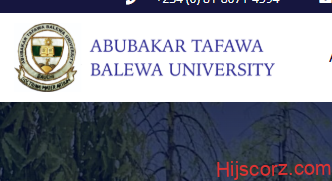Every university has its voice, some speak through tradition, others through innovation. But the Federal University, Wukari (FUWUKARI) speaks through its expectations. Among those expectations, none are as quietly powerful as the cut-off mark. But once it is revealed, the entire pool of applicants begins to shift, hopes adjust, strategies form, and dreams either gather speed or pause for re-evaluation. That’s the invisible power of the FUWUKARI cut-off mark.

The Federal University, Wukari cut off mark has not been announced for the 2025/2026 academic session. As the academic calendar rises on the horizon, this mark becomes the first checkpoint in every applicant’s journey. Whether you’re a student aiming for the Faculty of Pure Sciences or one seeking a future in Public Administration, the cut-off doesn’t ask for perfection. It asks for proof that you’re prepared, that you’re ready, that you’ve taken your academic pursuit seriously.
This article offers more than definitions. It uncovers the meaning behind the mark, the weight it carries, and how it silently decides who moves forward. Not with bias, but with balance. Not with noise, but with purpose. Welcome to your complete guide to FUWUKARI’s 2025/2026 cut-off marks, which is your first real test before the exam hall.
About FUWUKARI
Tucked away in the calm and culturally rich heart of Taraba State, the Federal University Wukari (FUWUKARI) isn’t just another institution, it is a rising force in Nigeria’s educational system. Born from a vision to bridge the academic gap in the North-East, FUWUKARI has quickly transformed from a name on a list to a place where ambitions are sharpened, and ideas are shaped into reality.
Established in 2011 as one of the new-generation federal universities, FUWUKARI stands as a symbol of accessibility and progress. Its foundations were built on the promise of equal opportunity giving students from all walks of life a platform to learn, grow, and contribute meaningfully to society.
With steadily expanding faculties, modern infrastructure, and a commitment to academic excellence, FUWUKARI doesn’t just award degrees rather it nurtures thinkers, problem-solvers, and leaders of tomorrow. Whether you’re drawn to the sciences, humanities, or management disciplines, the university offers not just education, but direction.
But beyond buildings and books, FUWUKARI is defined by its mission to produce graduates who are not only employable but impactful. It is a place where learning is practical, values are instilled, and every student is seen not just as a learner, but as a future builder.
Types of FUWUKARI Cut-Off Marks
When it comes to gaining admission into FUWUKARI, not all cut-off marks are created equal. These scores come in different forms, each serving a specific role in the decision-making process. Think of them as separation stages that help the university narrow down the most prepared and qualified candidates. To navigate them wisely, you need to understand their meaning and purpose.
1. JAMB (UTME) General Cut-Off Mark: This is the first gate. The Joint Admissions and Matriculation Board (JAMB) sets a baseline score every year, a national standard that universities must respect. FUWUKARI, like other federal institutions, aligns with this, but often sets its own slightly higher standard. This mark determines who is even eligible to apply for FUWUKARI’s post-UTME screening in the first place.
2. FUWUKARI Departmental Cut-Off Mark: Once you pass the general cut-off, the game gets more specific. Each department whether it’s Microbiology, Economics, or Computer Science sets its own cut-off based on competition, available slots, and student performance. Some departments may demand much higher scores due to popularity or limited space. This is the mark that truly decides whether your desired course is within reach.
3. Post-UTME Screening Cut-Off: FUWUKARI sometimes conducts its own post-UTME screening, and the result of this may carry a separate benchmark. This screening score, when combined with your UTME performance, influences your total aggregate and thus, your final standing in the admission process.
4. Catchment Area or Educationally Less-Developed States (ELDS) Cut-Off: In support of fairness and inclusivity, FUWUKARI like other federal universities may apply slightly lower cut-off marks for candidates from its catchment zones or underrepresented states. This helps promote access to education across different regions, especially in the North-East where the school is located.
Each of these cut-off marks plays a distinct role in shaping who gets admitted. Knowing them early helps you target your effort wisely, rather than shooting in the dark.
READ ALSO: Importance Of High JAMB Score
FUWUKARI Departmental Cut-Off Marks 2025
Unlike the general cut-off that welcomes you to the admission race, the departmental cut-off mark is the finish line that determines where you’ll land or if you’ll land at all. Each department sets its score based on demand, performance patterns, and available space. The more competitive the course, the higher the mark climbs.
Faculty of Sciences
Microbiology – 190 to 200: With growing attention on health and biotech, Microbiology remains a hot pick.
Computer Science – 200 to 210: Digital skills are in high demand, and so is this course.
Mathematics/Statistics – 170 to 180: A bit more flexible, but still expects solid logical thinking.
Faculty of Social Sciences
Political Science – 180 to 190: Popular among arts students, especially with interests in leadership.
Sociology – 170 to 180: Less fierce in competition but still requires thoughtful preparation.
Economics – 190 to 200: High demand means you’ll need more than the average score.
Faculty of Agriculture
Agricultural Economics – 170 to 180: Important and evolving, this course welcomes average scorers with ambition.
Crop Production and Soil Science – 160 to 170: Great for students passionate about food sustainability.
Faculty of Management Sciences
Business Administration – 180 to 200: Always in demand; cut-off depends on performance trend.
Accounting – 190 to 210: Expect higher marks due to its career prospects.
Public Administration – 170 to 180: Open to more students but still values competence.
Faculty of Education
Educational Management – 160 to 170: Friendly for aspiring educators.
Library and Information Science – 160+: Often accessible, yet essential in academia.
These figures are illustrative estimates to help you understand the range and reasoning behind departmental cut-off marks. FUWUKARI may adjust these based on candidate performance, quota, and policy decisions. If you’re aiming high, treat the cut-off like a minimum, not a target. Exceeding it gives you a stronger footing when competition tightens.
Additional Eligibility Requirements to FUWUKARI Cut-Off Mark
Scoring above the cut-off mark is important, but being eligible is the first step. Without meeting the foundational criteria, even the highest score won’t open FUWUKARI’s gates. So before you dream of admissions and departmental choices, pause and ask Do I qualify to even begin the journey?. Below are the key conditions every candidate must meet before their cut-off mark is even considered.
1. A Valid UTME Result: You must have sat for the 2025 UTME (JAMB) examination and selected Federal University Wukari (FUWUKARI) as either your first choice or be willing to change it to first choice if invited. No shortcuts, no UTME, no eligibility.
2. Meet or Exceed FUWUKARI’s General Cut-Off Mark: FUWUKARI will announce its minimum score (often between 150 and 180). If your UTME result falls below that minimum, you’re not eligible to apply for the Post-UTME screening regardless of your course of choice.
3. Correct Subject Combination in UTME: It’s not enough to pass UTME your subject choices must align with your chosen course. For example, choosing Literature for a Science course is a red flag. FUWUKARI follows strict guidelines on this, and incorrect subject combinations will automatically disqualify your application.
4. Minimum of Five O’Level Credits: Candidates must have at least five credit passes in relevant subjects including English Language and Mathematics in not more than two sittings (WAEC, NECO, NABTEB accepted). These must directly relate to your chosen department. For instance, a candidate going for Accounting must have credit in subjects like Mathematics, English, Economics, etc.
5. Age Requirement: By Nigerian university standards, you must be at least 16 years old by the time the academic session begins. Anything younger, and you might face deferral or denial.
6. Participation in Post-UTME (If Conducted): If FUWUKARI decides to conduct a Post-UTME screening, you must register, pay the required fee, and participate fully. Failing to show up or ignoring the screening process makes your application incomplete.
7. First Choice Institution: Many federal universities prioritize candidates who make them a first-choice option during UTME registration. FUWUKARI is no exception. Even if you initially chose it as second or third choice, you must be willing to switch to first choice if given the opportunity during the screening window.
Always bare in mind that eligibility isn’t just about the score, it’s about completeness, accuracy, and readiness. FUWUKARI’s system rewards candidates who are both academically sound and administratively careful. If you check every box above, then congratulations you’re not just hoping for admission, you’re prepared for it.
Conclusion
As you begin your journey toward gaining admission into FUWUKARI, remember that the cut-off mark is more than just a hurdle, it’s a signpost. It reflects not only the university’s expectations but also your readiness to thrive in a competitive academic environment. Whether you’re eyeing a high-demand course like Computer Science or a less-saturated program in Agriculture, the key is simple, aim higher than the bare minimum, meet all eligibility boxes, and stay alert to updates.
Admission into FUWUKARI is a possibility for the prepared, not the lucky. So, sharpen your focus, organize your credentials, and approach the process with confidence. The university gate doesn’t open to wishful thinking rather it opens to those who are ready to walk in.
Frequently Asked Questions (FAQs)
1. What exactly is a cut-off mark?
A cut-off mark is the minimum score a candidate must achieve in the UTME (JAMB) to qualify for further admission screening into a university. For FUWUKARI, it varies by course and year but serves as the first benchmark of eligibility.
2. Has FUWUKARI released the official cut-off mark for 2025/2026?
As of now, FUWUKARI has not officially announced the cut-off mark for the 2025/2026 session. However, it’s usually between 150 and 180, depending on the course. Keep an eye on the school’s portal for the latest update.
3. Can I apply if I scored below 150 in JAMB?
Unfortunately, no. FUWUKARI typically sets its general minimum at 150. If your score falls below that, you may not be eligible for the Post-UTME or any admission offer.
4. Do different departments have different cut-off marks?
Yes. Departmental cut-off marks vary based on the popularity and competitiveness of the course. For example, courses like Law, Medicine, or Computer Science may demand higher scores than Education or Agriculture.
5. Is FUWUKARI strict about subject combinations?
Absolutely. Even with a high score, using the wrong JAMB subject combination for your chosen course can disqualify you. Always double-check the requirements for your intended program.
6. I chose FUWUKARI as my second choice. Am I still eligible?
FUWUKARI typically prioritizes candidates who selected it as their first choice. However, you might still be considered if you change it to first choice during the Post-UTME window, if allowed.
7. Does FUWUKARI conduct Post-UTME exams or just screening?
This varies from year to year. Some sessions involve physical CBT exams, while others use an online or document-based screening method. Always follow official announcements to know which format applies.
8. Can I use two O’level results (combined results)?
Yes. FUWUKARI accepts two sittings for O’level results (WAEC, NECO, or NABTEB) as long as the required subjects are covered and passed with the minimum grades.
9. How do I know if I’ve met the departmental cut-off mark?
After the Post-UTME or screening process, FUWUKARI usually publishes departmental cut-off marks. If your score matches or surpasses the mark for your chosen course, you’re on the path toward admission consideration.
10. What happens if I meet the cut-off but miss another requirement?
All eligibility requirements must be met UTME score, correct subject combination, age, O’level credits, and application steps. Missing even one could affect your admission status.


